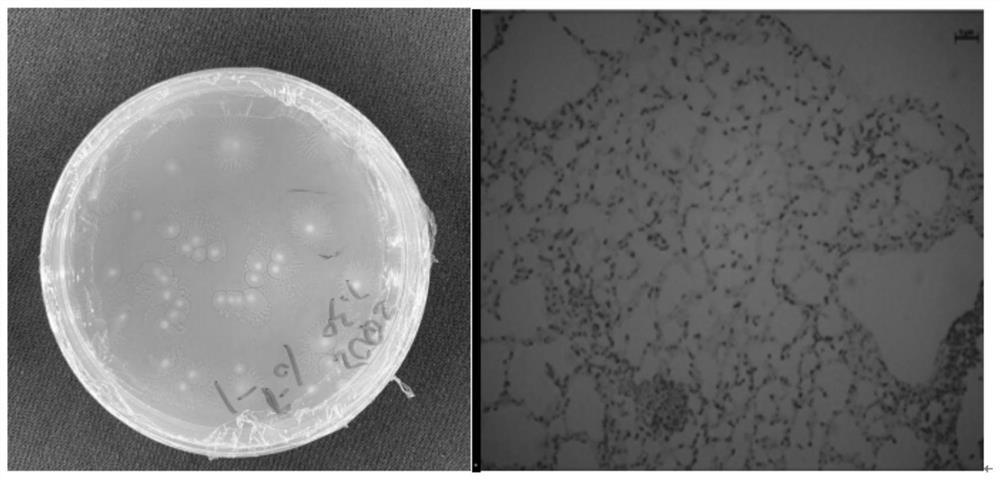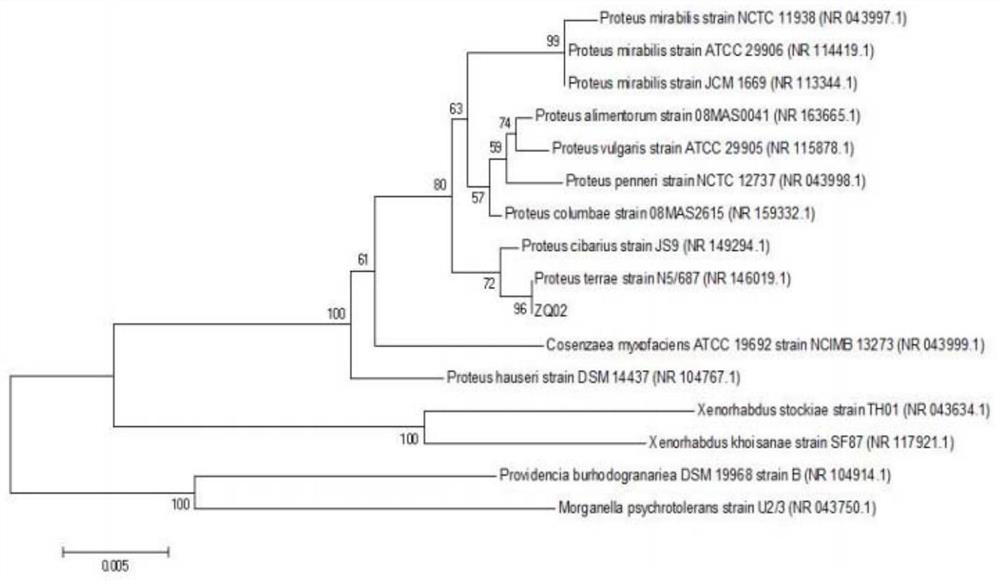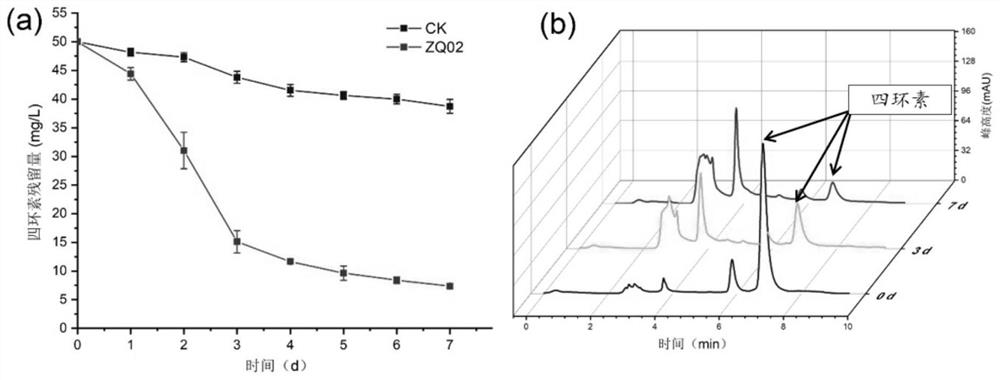A Soil Proteus and Its Application
A proteobacteria and soil technology, applied in the field of environmental pollution remediation, can solve the problems of substrate diversity and increase the difficulty of developing biodegradation technology, and achieve the effect of stable degradation performance and wide application prospects.
- Summary
- Abstract
- Description
- Claims
- Application Information
AI Technical Summary
Problems solved by technology
Method used
Image
Examples
Embodiment 1
[0052] Example 1 Isolation, identification and preservation of strains
[0053] 1. Isolation and purification of strains
[0054] Soil samples were collected from the farmland system in Boluo City, Guangdong Province, and 5 g was placed in a 250 mL Erlenmeyer flask containing 50 mL of basal salt medium. Maintain a constant temperature of 30 °C, acclimatize and cultivate for 5 d on a shaker at 180 r / min. Set 4 gradients of tetracycline concentration as the acclimation culture concentration (25, 50, 75, 100 mg / L), and transfer 5 mL of inoculum to the medium of the next concentration every 5d until the concentration is 100 mg / L.
[0055] Take 1mL of the acclimated bacterial liquid at a concentration of 100mg / L tetracycline and transfer it into 9mL of normal saline, and dilute it into 10-2, 10-3, 10-4, 10-5, 10-6, 10-7, 10 After -8, take 100uL of the liquid in 10-5 to 10-8 as the inoculum and spread it on LB solid medium. After 5 days, single colonies on the plate were picked a...
Embodiment 2
[0072] The degradation effect experiment of embodiment 2 strain on tetracycline
[0073] 1. Experimental method
[0074] (1) Preparation of inoculum
[0075] Take 0.2 mL of the cryopreserved degrading bacteria ZQ02 bacterial solution, transfer and inoculate it into a conical flask containing 50 mL of fresh LB medium. Take 25 mL of bacterial liquid into a sterilized centrifuge tube, centrifuge at 5000 r / min for 5 min to collect the bacterial cells, and wash twice with 25 mL of sterile saline. Finally, sterilized saline was added and shaken to make the inoculum OD. 600 A value of 1 is prepared as an inoculum.
[0076] (2) Determination of degradation performance
[0077] The tetracycline stock solution was added to the conical flask to make the initial concentration 50mg / L, pH value 7, and the degrading bacteria inoculum was added to the inoculum at 5% by volume, and a sterile blank control was established. Each treatment group was repeated 3 times. The temperature was set ...
Embodiment 3
[0085] Example 3 Optimal degradation conditions of tetracycline by strain ZQ02
[0086] 1. Experimental method
[0087] (1) Factors influencing the degradation of tetracycline by degrading bacteria
[0088] This single-factor experiment mainly studies the effects of temperature, initial pH value, inoculum size, and initial concentration on the biodegradation of tetracycline. The treatment groups of each influencing factor are: culture temperature (20℃, 25℃, 30℃, 35℃, 40℃); pH value (5, 6, 7, 8, 9); initial concentration (5, 10, 25 , 50, 75, 100 mg / L); inoculation amount (1%, 3%, 5%, 7%, 9%).
[0089] (2) Response surface optimization design
[0090] In order to clarify the bioremediation potential of tetracycline by degrading bacteria ZQ02 (Proteus terrae), the response surface method was used to optimize the influence of various factors and their interactions. Based on the Box-Behnken design, the main influencing factors (cultivation temperature, pH value, inoculum amount...
PUM
 Login to View More
Login to View More Abstract
Description
Claims
Application Information
 Login to View More
Login to View More - R&D
- Intellectual Property
- Life Sciences
- Materials
- Tech Scout
- Unparalleled Data Quality
- Higher Quality Content
- 60% Fewer Hallucinations
Browse by: Latest US Patents, China's latest patents, Technical Efficacy Thesaurus, Application Domain, Technology Topic, Popular Technical Reports.
© 2025 PatSnap. All rights reserved.Legal|Privacy policy|Modern Slavery Act Transparency Statement|Sitemap|About US| Contact US: help@patsnap.com



